9 Nights / 10 Days

After immigration and customs formalities, you will be received by the representative of Charisma Bhutan Tours & Treks. Then Drive to hotel in Paro.
After checking into your hotel and refreshment you will visit Paro Rinpung Dzong (fortress), built in 1645 to defend the valley against Tibetan invaders. The Dzong is now being used as an administration center and school for monks. From the Dzong you will walk down to Rimpung Bridge (Traditonal Cantilever Bridge), oldest bridge in Bhutan.
Ta Dzong (National Museum)
Then visit one of the clusters of farm houses in Paro Valley and a visit to a farm house offers a good glimpse into the lifestyle of a farmer.
In the evening drive up the Paro valley to visit Drukgyel Dzong (in ruins), 18 km. from Paro town on the north side of the valley.It was built in 1649 to commemorate the victory of Bhutanese over allied Tibetan-Monolian forces. The Dzong as a defense fortress is said to have housed the finest armory in the country.
Dinner & overnight at a hotel in Paro.
Distance: 125 km & estimated driving time: 3 ½ hours
After breakfast, you will travel to Punakha & Wangdue which will take you through Chunzom (confluence of Pachu- the river flowing through Paro valley & Wangchu –the river flowing through Thimphu valley). On the way, visit Tachog Lhakhang (temple) , this 14th century temple located on the base of a mountain across the Pa chu on the Paro-Thimphu highway, is a must visit temple in the Paro valley. Built by the great master architect Thangtong Gyalpo, the temple houses some unique statues. To get to the temple one may actually walk over the iron chains that spans over the Pa chu.
After crossing Chunzom, the drive will take you along the Wangchu upto Simtokha where road diversion leads you to Punakha/Wangdue through Dochula Pass (3,088m). In the clear spring sky, you can enjoy the panoramic view of the Himalayan Mountain ranges. At Dochula Pass you will see the beautiful 108 chortens (stupa) built on the hill by Ashi Dorji Wangmo Wangchuck (the Queen Mother of Bhutan) for the security and well being of His Majesty, the King of Bhutan. You will also visit Druk Wangyal Lhakhang (temple) .The temple was built to honor His Majesty Jigme Singye Wangchuck (the 4th King of Bhutan). The past and future appear to merge in the details of the temple that tells the story of a supreme warrior figure whose vision pierces the distant future.
After refreshment at Dochula Pass Resort you will continue your journey to Punakha. Punakha has been inextricably linked to some of the most momentous events in the Bhutanese history and deserves its reputation as one of the most beautiful and significant regions at the heart of Bhutanese culture. Punakha had served as the capital of Bhutan from 1637 till 1907 and the 1st National Assembly was held here. Punakha Dzong (fortress) is historically important and stands as the symbol for a unified Bhutan.
You will stop at Lobesa Village to visit the Devine Madman’s Monastery-Chhimi Lhakhang, famously known for its fertility shrine, where one can receive a special fertility blessing. After lunch at Lobesa Village you will visit thePunakha Dzong, located on the island of the Pho - Chu (male river) and the Mochu (female river). The dzong was built in 1637 by Zhabdrung Ngawang Namgyal (high Drupa Kagyu lama who unified the warring valley kingdoms under a single rule in 16th century) to serve as the religious and administrative seat of the region. It was here that the dual system of government was introduced in the 17th century and in 1907, enthroned the first King Gongsar Ugyen Wangchuck. Damaged over the centuries by four catastrophic fires and an earthquake, the dzong has been fully restored in the recent years by the 4th King Jigme Singye Wangchuck. Also visit the massive Kuenray, the Coronation Hall of all Bhutanese kings, the Dzongchung at the entrance to the dzong and the cantilever bridge over the Mochu that has been recently renovated.
Dinner & overnight at a hotel in Punakha.
Distance: 197 km, estimated travel time: 7 hrs
After breakfast, travel to Bumthang through Trongsa.The drive will take you through dense forests of oak and blue pine trees and through the subtropical vegetation. The journey will also take you through the village of Nobding and Pele la pass (3300m). Throughout your trip you will come across the beautiful sceneries of rural Bhutan, with scattered settlements far from the road which makes for good photographing. You will also pass through open meadows, and valley of yak herders and several other villages via Chendebji Chorten ( Stupa) . Lunch and refreshments will be served enroute. On arrival at Trongsa, you will visit National Museum which is housed in the Ta Dzong (watch tower).A museum in which aspects of Bhutanese culture and history are explained by beautifully objects. Documentary will be shown too which explains a great deal about Bhutanese history and history of monarchy.
After that you will continue your journey to Bumthang passing through Yotong La Pass (3400 m). Just before reaching Bumthang you will come across “Yathra” Weaving Centre at Zugney Village where you will see local weavers weaving Yathra. Yathra is the name for the colorful, hand-woven woolen cloth (often with geometric designs) that is produced in this region and wool used for this type of textile is sheep wool as the sheep is reared in this Bumthang Valley. Yathra is made into jackets or bags, etc.
Then you will be driven further to Bumthang Valley. On arrival at Bumthang, check into your hotel in Bumthang.
Dinner and overnight at a hotel in Bumthang.
After breakfast, visit the following:
Jambay Lhakhang, built in the 7th century by the King Songtsen Goempo of Tibet. In his effort to propagate Buddhism he had a plan to build a total of 108 temples in Tibet and neighboring kingdoms.
Kujey Lhakhang (Kujey means, "Body imprint"). The temple to the right is the oldest and was built by Minjur Tempa in 1652. It was built around the cave in which Guru Rimpoche meditated and left his body imprint.
Jakar Dzong, "castle of the white bird". According to legend, when the lamas assembled in about 1549 to select a site for a monastery, a big white bird rose suddenly in the air and settled on a spur of a hill. This was interpreted as an important omen, and the hill was chosen as the site for a monastery and for Jakar Dzong. The fortress is now used as an administrative center of the valley and summer residence of Trongsa monks.
Tamshing Lhakhang: This temple is also known as Tamshing Lhendrup Chholing (Temple of the Good Message). In the evening stroll around the beautiful landscape of the Bumthang Jakar valley
After lunch drive to Mebar Tsho ( Burning lake) and visit the lake and then drive back to your hotel and in the evening you may wish to stroll around the beautiful landscaped gardens of Bumthang.
In the evening you may wish to stroll around the beautiful landscaped gardens of Bumthang.
Dinner & overnight at a hotel in Bumthang.
Distance: 208 km, estimated travel time: 8 hrs
After breakfast, drive to Punakha via Phobjikha valley. Driving through the dense forests of the Phobjikha Valley you arrive at Gantey village where you see the Gangtey Monastery and visit the monastery. Phobjikha valley is part of the beautiful Jigme Singye Wangchuck National Park ( formerly known as Black Mountains National Park), one of Bhutan’s most important nature sanctuaries. Each winter it is home to a flock of 300 rare and endangered black-necked cranes. The surrounding hills and mountains are home to nomadic shepherds and yak-herders. This is one of the most remote and untouched regions in Bhutan and is only just opening its doors to the outside world.
After lunch at Phobjikha valley and explore the valley and also visit the Black Necked Crane Center.
Then drive onto Punakha/Wangdue. Dinner & overnight at a hotel in Punakha/Wangdue.
Distance: 71 km & estimated driving time: 2 ½ hours
After breakfast you will be driven to Thimphu and After lunch visit the following
Centenary Farmers’ Market (open from Thu-Sun only): Most of the Thimphu’s population and many valley dwellers converge on the bustling weekend market, held by the side of Wangchu River. A wide range of foodstuffs and local arts and crafts are sold at the market, which runs from Friday afternoon till Sunday evening. A visit to the market provides great photo opportunities, as well as the chance to mingle with local people.
Takin Preserve, which houses the national animal the Takin that is only found in Bhutan. This is an extremely rare member of the goat family. Found in herds in the very high altitudes (13,125ft and over). They live on a diet of grass and bamboo. It can weigh as much as 550 pounds.
Watch Archery match ( Bhutan’s national game)
Tashichhoe Dzong, a fortress of the glorious religion. It was built in 1641 by Zhabdrung Ngawang Namgyel and was reconstructed into present structure by the late King, His majesty Jigme Dorji Wangchuck in the year 1962-1969. It houses the secretariat building, the throne room and the office of the king, and the central monk body.
The National Memorial Chorten (stupa) which was constructed in 1974 as a memorial for the third King of Bhutan, King Jigme Dorji Wangchuck, who is widely regarded as the father of modern Bhutan. The term ‘chorten’ literally means ' seat of faith' and Buddhists often call such monuments the 'Mind of Buddha'. Meet the elderly generation in circumambulation, especially in the evenings, at the National Memorial Chorten.
Craft Bazaar where craftsmen and artisans from across the country display and sell their handicrafts.
Dinner & overnight at a hotel in Thimphu.
After breakfast visit the following:
Traditional Bhutanese paper making factory. The handmade paper making in Bhutan stemmed from the age old tradition originated in 8th century of Bhutanese history. The handmade paper constitutes as valuable National heritage of Bhutanese cultural identity and is preserved through all the ages. The Traditional paper is recognized and held high esteem both in home and outside world. Jungshi Paper Factory was established in November 1990 as an undertaking of the Royal Government of Bhutan. The unit now boasts as a major and sole dealer in handmade paper and its products.
National Textile Museum which is a good place to see the art of traditional weaving being kept alive and preserved through exhibition and has a good collection of old textiles which are rich in colors and designs.You will also see people weaving with intricate designs.
National Institute of Traditional Medicine , where medicinal herbs are compounded and dispensed, and traditional medical practitioners trained.
School of Traditional Painting of Arts and Crafts where students undertake a six-year course on the 13 traditional arts and crafts of Bhutan.
After lunch drive for about 30 minutes to the base camp of Tango Monastery and hike up to the Monastery. The walk up to the Monastery is through the forest filled with Rhododendron flower trees which will be in full bloom during April month. Tango Monastery is the center for higher studies for monks. The view from Tango Monastery is breathtakingly beautiful. You will experience complete peace and serenity in this area. After visiting the monastery, walk back to the road and then drive back to Thimphu .
Dinner & overnight at a hotel in Thimphu.
Thimphu-Haa valley
Distance: 108 km,estimated driving time: 3 hrs
Haa-Paro
Distance: 65 km, estimated driving time: 1 1/2 hrs
After breakfast travel to Haa valley (the valley of Guardian Spirit) through the stretch of villages of Dogakha, Susuna and Jabana visiting typical Bhutanese farmhouses along the way where you will be treated to typical Bhutanese hospitality with local wine and butter tea with snacks ( mostly roasted rice).You will also witness farmers working in their farms. Then continue your journey to Haa valley and you stop for lunch before making your way to either Lhakhang Karpo (White Temple) or Lhakhang Nagpo (Black Temple) or both depending on your interest. Local legend has it that deity helped construct the temple thus giving the name to Haa, meaning ‘surprise’. Haa is overlooked by three mountains called ‘Rig Sum Gonpa’ which signify three Buddha deities; Jambayang, Chana Dorji and Chenrizig. Haa was not opened up to tourists until 2002 so remains relatively unspoilt by the 21st C. Then you will continue your journey to Paro driving you through winding road along the side of the mountain and you will make the climb to the Chele La Pass, 3822 metres high, with spectacular glimpses of the Bhutan Himalayas all the way. After crossing the Chilela Pass the journey will take you through farmlands and scattered hamlets and finally to Paro Valley.
Overnight at a hotel in Paro.
After breakfast,drive to Paro which takes about 1 hr and then hike up to Taktsang Monastery, also known as ‘Tiger’s Nest’. The walk up to the viewpoint will take about 1 – 1 ½ hrs depending on your fitness and from View Point you will enjoy a spectacular view of the monastery clinging to the side of the cliff. Stop for refreshment at the View Point Cafeteria. Then walk further up to the monastery which will take about 1 hour. It is said that in the 8th century Guru Rinpoche flew on the back of a tigress from eastern Bhutan to this place and meditated in a cave here for 3 months. The principal Lhakhang (monastery) of the present monastic complex dates from 1692. Taktsang was damaged severely by fire in 1998 but has now been fully restored to its former glory.After visiting the monastery, walk downhill back to the road on the way stop for lunch at the view point cafeteria and then walk further downhill to the road point. Then drive back to hotel. On the way visit Kyichu temple,one of the 108 temples built in the 7th century by the Tibetan King Songsten Gampo. The story goes that a giant demon lay across the whole area of Tibet and the Himalayas and was preventing the spread of Buddhism. To overcome her, King Songtsen Gampo decided to build 108 temples, which would be placed on all the points of her body. Of these 108 temples, 12 were built in accordance with precise plans. Thus, it happened that in about the year AD 638 the temple of Jokhang in Lhasa was built over the very heart of the demon.
In the evening you can relax in the Traditional Bhutanese Hotstone bath.
Dinner & overnight at a hotel in Paro.
In the morning after breakfast your tour guide from Access Bhutan Tours will escort you to the Paro airport for your flight to your onward destinations.
We Guaranteed your Visa Approval
We boast at 100% approval rate when it comes to getting Visa’s for our clients. To enter Bhutan, you are required to have a VISA except for Indian, Maldivian and Bangladesh. All other tourists must obtain a visa clearance prior to travel to Bhutan. Visas are processed through an online system by your licensed Bhutanese tour operator, directly or through a foreign travel agent.
You are required to send the photo - page of your passport to your tour operator who will then apply for your visa. The visa will be processed by the Tourism Council of Bhutan (TCB) once the full payment of your holiday (including a USD $40 visa fee) has been wire transferred and received in the TCB bank account. Once received the visa clearance will be processed within 72 working hours. Charisma Bhutan Tours & Treks will help you to obtain your Bhutanese Travel or Tourist visa once your trip is confirmed by making full payment.
At your point of entry you will be required to show your visa clearance letter, the visa will then be stamped into your passport.
Charisma Bhutan Tours & Treks is Local licensed Tour Operator authorized to organize Bhutan Visa and we boast a 100% approval rate when it comes to getting Visa’s for our clients.
Note: Your Passport must be valid for 6 months beyond the intended length of stay.
Visa fee of US$ 40 per person should be send along with the tour payment.
Indian, Bangladeshis and Maldivian nationals can obtain visa at the port of entry on producing a valid passport with a minimum of 6 months validity (Indian nationals can also use their voters Identity Card (VIC)).
The following are the details required for processing your Bhutan tourist visa prior to the dates of your travel to Bhutan.
1. Scanned copy of passport
2. Occupation
3. Permanent Address
The visa will be approved by the Tourism Council of Bhutan (TCB) once the full payment is transferred in the Tourism Council of Bhutan account, kindly note that without full payment TCB will not approve the visa clearance.
Entry Permit:
Indian Nationals travelling to Bhutan do not need Visa.
1. Voter Identity Card or
2. Passport or
3. Aadhaar card with supporting documents (Like Pan card or Driving License) with more than six months validity however is required for presentation at the immigration during entry, to obtain an entry permit along with a copy of passport size photograph and a copy of your passport or VIC or Aadhaar Card. Bhutan Government with the aim to provide efficient and better services to the regional tourists (Indian, Bangladeshi and Maldivian nationals) an online permit system, so all visitors booking their tour with us can get free online permit provided they have valid passports only. Thus our guests don’t need to stand on queue for longer time.
Documents required for Permit:
4. Passport with validity of at least six months
5. Voter Identification Card for Indians
6. Aadhaar Card with supporting Documents.
7. Birth Certificate in original must be produced for children and a photo copy of the same must be attached with a prescribed application form.
Route Permit:
It is required for those traveling to restricted areas beyond Dochula pass. The Route Permit is processed & issued in Thimphu, only after arrival in Bhutan. Permit can be processed only during working days:
(Monday - Friday) 9 am to 5 pm in summer (1st March - 31st October)
(Monday - Friday) 9 am. To 4 pm in winter (1st November - 28th/29th February).
Why Trekking In Bhutan?
Trekking in Bhutan with Charisma Bhutan Tours & Treks is a best way to experience the beauty of inner Himalayas with trekking in Bhutan. Bhutan has been described as the land of natural paradise and ample opportunity to walk or trek in the pristine environment. We offer trekking routes which are unparalleled in beauty and challenge. Trekking in Bhutan means walking through pristine landscapes, valleys and mountains with stunning views of the Himalayan range exposing exotic flora and fauna not seen anywhere in the globe. For the nature trekkers, we offer customized treks for ornithology, zoology and ethnology botany as Bhutan is famous for the large density of animals, birds, medicinal herbs and orchids etc.
We (Charisma Bhutan Tours & Treks) are passionate about trekking trips in Bhutan. We have the unmatched caliber and enthusiasm to unravel the unexplored gems of Bhutan.
If you’ve an adventure lover, you’ll be delighted to discover the unseen rugged side of Bhutan.
Trekking in Bhutan
With the likes of trail that takes you right at the foot of worlds’ tallest unconquered mountain (Gangkar Puensum 7550m), trekking in Bhutan will give you a new experience never like before. With more than 70 percent of the country covered by undisturbed wilderness, trekking in Bhutan will take you ever closer to the nature. These trekking trails once used by famous Buddhist saints like Guru Rinpoche (who introduced Buddhism in Bhutan) in 746 AD while visiting Bhutan from Nepal and Zhabdrung Ngawang Namgyal (the unifier of modern Bhutan) in 1616 while fleeing Tibet for a political dispute, this routes are the genuine routes where Bhutanese people still use it today. What makes trekking in Bhutan unique is its calmness and natural feeling; credit to less numbers of trekkers visiting Bhutan and its natural unpaved trails unlike other countries around the world.
Trekking Permits
No specific trekking permits are required to trek in Bhutan. You can trek in Bhutan with normal tourist visa for international tourist and normal entry permit for regional tourist (Indian, Bangladeshis and Maldivians).
Best season for trekking in Bhutan
The best season to trek in Bhutan depends on which trekking trail you choose to but in general, March, April, May, September, October and November are the best months to trek in Bhutan. In the month of June, July and August Bhutan receives heavy rainfall and in December, January and February, the high mountain passes along the trekking trails are covered with snow, making it difficult for trekkers.
The best season to trek on different trails in Bhutan are as mentioned below:
8. Bumdra Trek - February, March, April, May, September, October, November and December. However one can trek year round despite any season on this trail.
9. Gangtey Trek - March, April, May, September, October, November and December.
10. Samtengang Trek - January, February, March, April, May, September, October, November and December. It’s doable all year round despite any season.
11. Bumthang Owl Trek - March, April, May, September, October, November and December.
12. Bumthang Cultural Trek - March, April, May, September, October, November and December.
13. Sagala Trek - March, April, May, September, October, November and December.
14. Sinchula Trek - March, April, May, September, October, November and December.
15. Druk Path Trek - March, April, May, September, October, November and December. It’s Doable all year round despite its best seasons.
16. Dagala Lake view Trek - March, April, May, September, October, November and December. Despite the best season, one can trek year round on this trail.
17. Jomolhari Trek - March, April, May, September, October and November.
18. Laya Gasa Trek - March, April, May, September, October and November.
19. Gangkar Puensum base camp trek - One can trek on this route from mid June to October but the best recommended month for this trek is October.
20. Snowmen Trek I - One can trek on this route from mid June to October but the best recommended month for this trek is October.
21. Snowmen Trek II - One can trek on this route from mid June to October but the best recommended month for this trek is October.
Different Grading in Trekking
Trekking in Bhutan can be of 2 days or a month long. Depending on the number of days taken to trek, gain in altitude and nature of terrains, trekking routes in Bhutan can be graded into four categories; easy, moderate, difficult and very difficult.
1. Easy
Bumdra Trek
Gantey Trek
Samtengang Trek
Bumthang owl Trek
Bumthang Cultural Trek
Sagala Trek
Sinchula trek
2. Moderate
Druk Path Trek
Dagala Lake view Trek
3. Difficult
Jomolhari Trek
Laya Gasa Trek
4. Very Difficult
Gangkar Puensum base camp Trek
Snowmen Trek I
Snowmen Trek II
Trekking experience and physical fitness required to trek in Bhutan
At 10,760 feet above sea level, Bhutan is ranked highest country in the world, in terms of average land elevations. As a result most of its trekking trails are located on higher altitude, averaging over 12,000 feet above sea level, requiring certain level of physical fitness and trekking experience.
However with varieties of trails to choose from, both beginners and pro can enjoy trekking in Bhutan. Be it 2 days or grueling 25 days trekking, Bhutan has it all for you to choose from.
For those who are attempting to go for Snowmen trek (25 days trek), it will be asset if you have certain level of trekking experience and physically fit enough, since snowmen trek is referred to as amongst the world’s most toughest trekking route involving climbs over 5000 m.
Safety measures
Altitude Sickness
Do not ignore any kind of symptoms related to altitude sickness; difficulty in breathing, headache, giddiness and numbness in limbs. If you experience any of the mentioned symptoms, inform your guide immediately.
Though portable oxygen supplies and first aid kits are always carried along with by the crew members but if possible carry some diamox (acetazolamide) pills, which can be bought from pharmacies across Bhutan.
The best tactics, if you suffer from altitude sickness is to stop ascending and if the symptoms do not go away or get worse, then descend down. It is advisable that you drink large amount of water every day while you are trekking.
Food and water contamination
Meals while trekking in Bhutan are prepared every day by cooking crews and no left over foods are served. Lunch are prepared in the morning along with breakfast and carried as a packed lunch. Dinners are prepared at campsite at the end of every trekking day. Hence chances of getting food contaminated while trekking in Bhutan are very slim.
Bottled water is carried by trekking crew members but however it is not sufficient for longer duration treks and hence the crew member boils water in the morning for you to carry for the day.
It is advisable that you bring your own water bottle and if possible carry some water purifier solutions as well. Refrain yourself from drinking directly from the streams nearby.
Criminal activity
No trekking trails in Bhutan will meet you with any kind of criminal activities. In fact if you are in need, everyone you encounter will be very much happy to help you whatever way they can.
Safety considerations
Consult with your guide in regards to dos and don’ts and stick together with your group (if trekking on group). Carry essential items such as head torch, portable cell phone chargers and your mobile phone along with you.
Trekking gears and manpower provided by Charisma Bhutan Tours & Treks are as follows:
Horses/ potters and ponies
Toilet tents with toilet pots and toilet papers.
Shower tents with hot water shower bag (only for longer duration treks)
Sleeping tents (A - shaped) with pillows and mattress
Dinning tents with tables and chairs
Kitchen tents with whole set of kitchen items to prepare meals.
Trekking/camping cooks
Trekking/camping staffs
Hot water bags in bed.
Some of the items that you need to bring along while trekking in Bhutan are; Sleeping bag, sturdy and comfortable trekking boots, few changes of cloths, gloves, neck warmers, wind proof/water proof jackets, warm jackets and hiking pants.
Accommodations during trekking in Bhutan
With no hotels or home stays along the trekking trails, all the trekkers must spend their nights in the tent (camping). Camping crew member arranges your tents. They travel ahead of you and put everything on place before you reach your campsite.
Meals while trekking in Bhutan
All the meals are prepared by trekking cooks who will trek alongside you throughout the entire tour. Lunch are prepared in the morning and carried by trekking staffs. Breakfast and dinners are prepared and served at the campsite.
Since there are no grocery stores or shops along the trekking trails, all the food items are bought and carried along by the crew members, their horses and yaks. As and when available, our crew members will try to buy fresh vegetables from local communities and include in your menu.
Note: Trekking alone in Bhutan lone trekkers should not worry because he or she will be followed by trekking guide and crew members for the entire trekking tour.
Getting into Bhutan
Travel by air
The easiest way for visitors to enter Bhutan is by air. Bhutan has two carriers - Druk Air and Bhutan Airlines. The pilots are especially trained and internationally licensed for mountain flying and both the airlines have impeccable safety record.
On clear days the flight to Bhutan offers spectacular views of the Great Himalayas, Mt. Everest, Mt. Kanchenjunga, Jumolhari, Kula Gangri and you can also catch a glimpse of the Great Tibetan Plateau and its grandeur stretching in the distance.
We will book your tickets well in advance to avoid last minute rush during the peak seasons without the added commission. To do this you need to confirm your trip, especially during the rush of spring and the autumn festivals, at least 3 or 4 weeks in advance.
Note: There are flights to destinations that include Bangkok, Delhi, Kolkata, Bagdogra, Bodh Gaya, Dhaka, Kathmandu, Guwahati, Singapore and Mumbai.
Travel by land
If you wish to travel overland, you can enter and exit Bhutan through its southern gateway of Phuentsholing into the Indian state of West Bengal. It is approximately a five hour drive from Thimphu. The nearest airport is at Bagdogra, located approximately four hours by road from Phuentsholing. This border point is an ideal junction for those wishing to combine their exploration of Bhutan with the Indian states of Sikkim and West Bengal.
For those who would like to journey across Bhutan, there is an exit only border crossing at Sumdrup Jongkhar in southeast Bhutan to India. The closest airport is 110 km away in Guwahati. From here you a number of destinations you can fly on to including Delhi, Bombay, Kolkata and Bangkok. This is convenient for those flying into Paro in the west and touring across Bhutan without back tracking.
Note: Phuentsholing, Gelephu and Samdrup Jongkhar are the only land border areas open to tourists.
Entry through Samdrup Jongkhar will take you to Trashigang, the largest District in the country, and from there over the lateral route to Mongar, Bumthang, Trongsa, Wangduephodrang and then finally into capital town - Thimphu. The distance is about 700 kms and will take you a minimum of three days to reach Thimphu.
Travelling within Bhutan
One can use domestic flight service to visit Bumthang in central Bhutan or Yonphula in eastern Bhutan. The Yonphula Airport is currently not operational till end of 2016. Flight service between Paro and Bumthang operate on Tuesdays, Thursdays and Sundays. The other mode of transport within Bhutan is by road. All the major towns in the 20 districts of Bhutan are accessible by road. Despite high mountains, steep slopes and the deep valleys, Bhutan has a relatively well developed network of roads.
We Charisma Bhutan has in mind set to provide safety and security to our guest with best price of packages. we have packages from standard to Luxury packages too. We Charisma Bhutan is Govt. License travel agent in Bhutan.We are monitor by Tourism Council of Bhutan and Association of Bhutanese Tour Operator, so there is give best service to our guest.we have packages like: Honeymoon packages, Holiday packages, Bird watching tour, Culture tour, Trekking Packages , Biking tour, Photographer Tour,Textile Tour and many more. Read More...
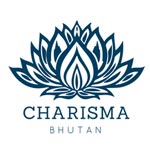
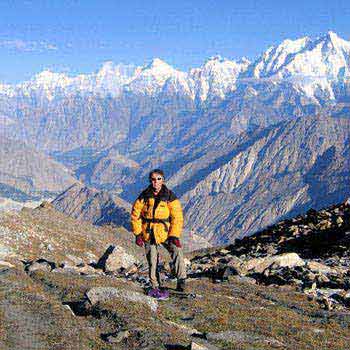 10D/9N
10D/9N
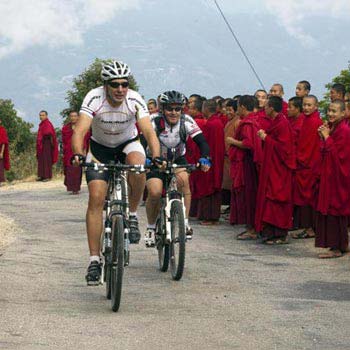 8D/7N
8D/7N
 6D/5N
6D/5N
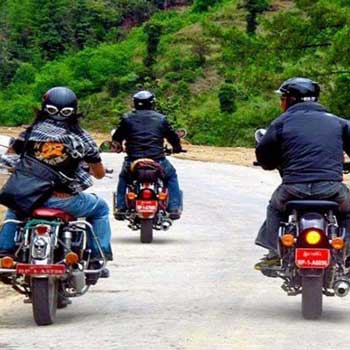 1D/0N
1D/0N
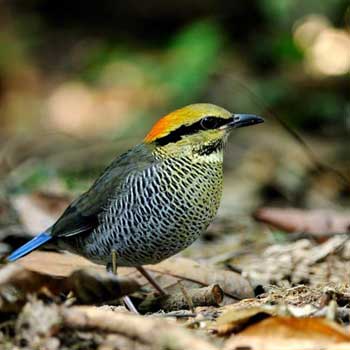 1D/0N
1D/0N
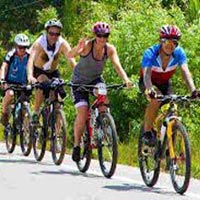 13D/12N
13D/12N
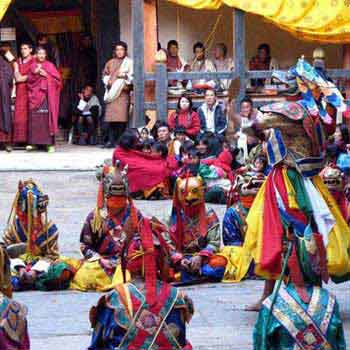 10D/9N
10D/9N
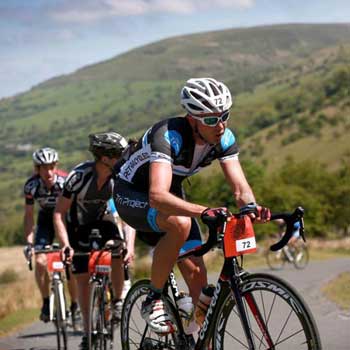 1D/0N
1D/0N
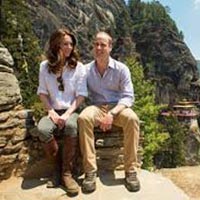 8D/7N
8D/7N
 10D/9N
10D/9N
South India - Kerala & Tamil nadu- 9 N/1..
Kovalam - Munnar - Alleppey - Madurai - Kochi - Kumarakom Thekkady
 10D/9N
10D/9N
Srinagar - Anantnag - Patnitop - Jammu - Baramulla
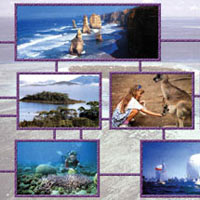 10D/9N
10D/9N
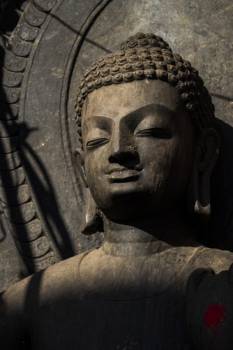 10D/9N
10D/9N
New Delhi - Varanasi - Bodhgaya - Rajgir - Nalanda - Patna - Vaishali - Kushinagar ..
 10D/9N
10D/9N
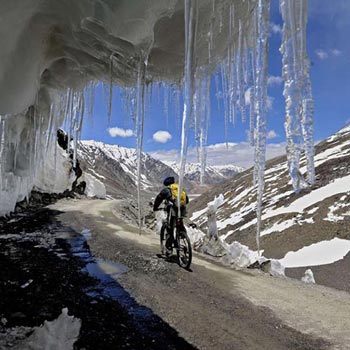 10D/9N
10D/9N
Kinnaur - Kaza - Spiti Romantic Package
Chandigarh City - Shimla - Kinnaur - Kaza - Digboi
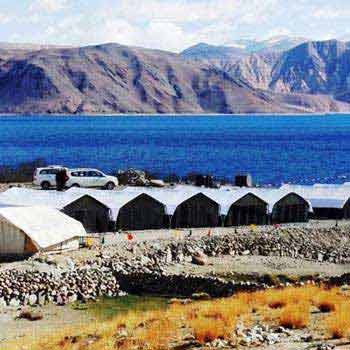 10D/9N
10D/9N
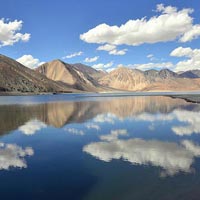 10D/9N
10D/9N
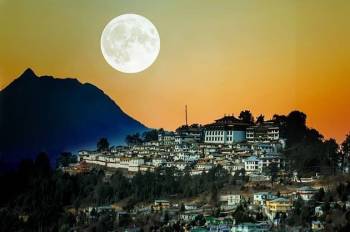 10D/9N
10D/9N
Tawang Kaziranga Shillong Tour
Guwahati - Shillong - Tawang - Kaziranga - Cherrapunji
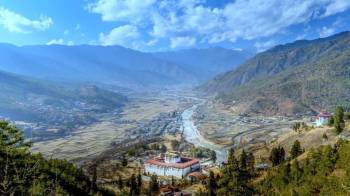 7D/6N
7D/6N
Cultural Bhutan 7 Days - 6 Nights Tour
Thimphu - Paro - Wangdue Phodrang - Punakha
 15D/14N
15D/14N
Himalayan Odyssey 14 Nights - 15 Days Tour
Thimphu - Paro - Wangdue Phodrang - Punakha - Mongar - Bumthang - Trashigang
 10D/9N
10D/9N
 8D/7N
8D/7N
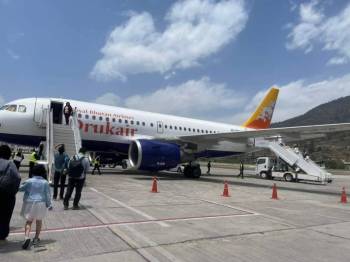 16D/15N
16D/15N
15 Nights/16 days Merak Sakteng Trekking..
Thimphu - Paro - Punakha - Bumthang - Trashigang
 10D/9N
10D/9N
Thimphu - Paro - Wangdue Phodrang - Punakha - Trongsa - Bumthang
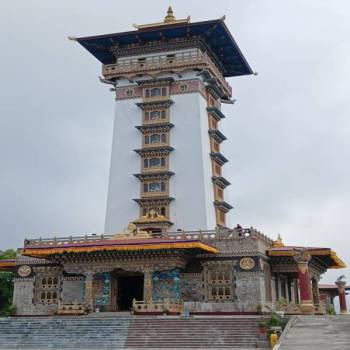 7D/6N
7D/6N
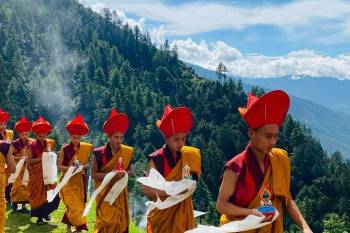 5D/4N
5D/4N
 7D/6N
7D/6N